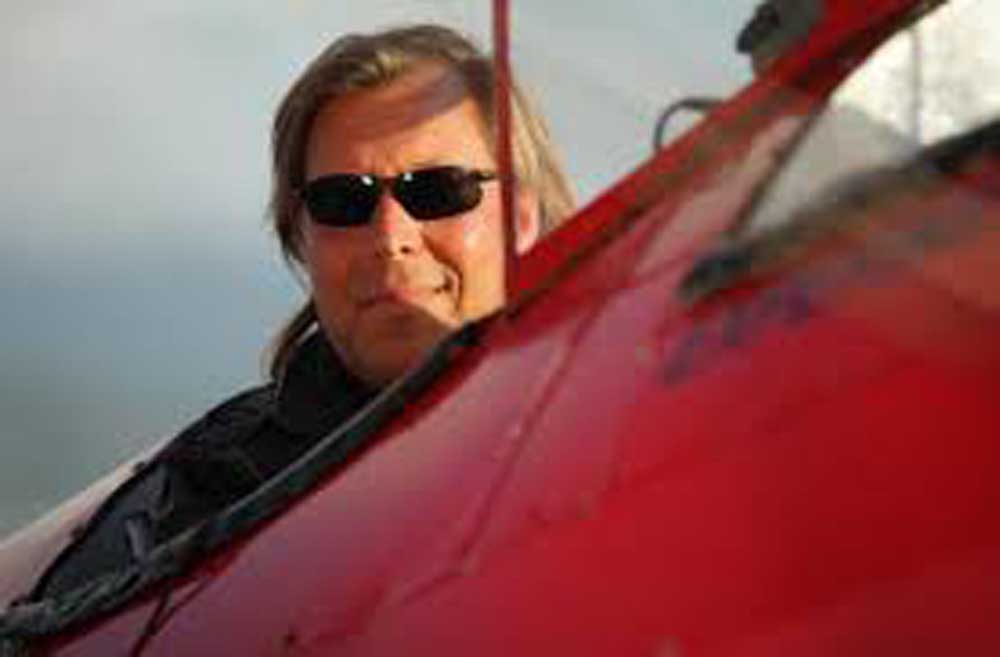NTSB: Madras air show pilot misjudged low-altitude loop
Published 12:00 am Thursday, July 26, 2018

- PIlot Marcus Bruce Paine, 61, died Saturday, Aug. 27, 2016 in a crash at the Airshow of the Cascades. (Airshow of the Cascades/Submitted photo)
The biplane pilot killed in a crash at the Airshow of The Cascades in 2016 used poor judgment and calculations when he performed a low-altitude loop over the Madras Municipal Airport, according to a final report released by the National Transportation Safety Board.
Marcus Bruce Paine, 61, of Anchorage, Alaska, was flying a Boeing Stearman on Aug. 27, 2016, performing a maneuver he had called “sketchy.” Spectators reported watching Paine fly in a loop with a smoke trail, and about three-quarters of the way around the loop, Paine tried to pull up, but the bottom of the plane hit the ground.
The report notes that Paine did not account for “high density altitude conditions,” which resulted in decreased engine power and a reduced rate the plane was able to climb in the air. Density altitude is the height an airplane feels like its flying as temperature and altitude increase and air density decreases.
“It is likely the pilot failed to adequately compensate for the changes in airplane performance due to the high density altitude conditions, which resulted in a collision with terrain,” wrote NTSB investigator Dennis Hogenson in the report.
The biplane crashed adjacent to Runway 34, which is one of two runways at the airport. Runway 34 is 5,089 feet long and 75 feet wide. The plane was destroyed, and the fuselage, engine covering and right wings were consumed in a fire, according to the report.
The Oregon State Medical Examiner’s Office autopsy determined Paine’s cause of death as, “multiple blunt force injuries.” A toxicology report found no drugs in his system.
The day before the fatal crash, Paine successfully completed the low-altitude loop during a morning practice session and a public demonstration that evening.
Another pilot at the air show told investigators that during the evening demonstration Paine described the maneuver as “sketchy” because of the low altitude of his demonstration flights.
The pilot asked Paine how to perform the maneuver, and Paine replied that it was a “complete crapshoot.”
“At the top of the loop, the pilot would decide whether he would ‘pull through and continue the loop or roll out,’” Hogenson wrote.
Video footage of the crash showed Paine was in control of the airplane throughout the loop, and there was no evidence of a mechanical failure.
The safety board investigation took almost two years to complete, which is common for fatal crashes, according to NTSB spokesman Peter Knudson.
Investigators often have to wait for autopsy results or to test a component of an airplane to determine if it was damaged before or after a crash, Knudson said.
“There are so many dynamics going on, it’s hard to predict the length of any given investigation,” Knudson said.
Paine was a distinguished graduate of the Virginia Military Institute and a former U.S. Army Special Forces officer, airborne Ranger and jump master. He also commanded a combat dive A Team, working in the Middle East and South America.
Paine was considered a skilled instructor who had been a pilot for more than 20 years.
The crash is one of four fatal plane crashes in Madras since 2005, according to the NTSB database. The NTSB is still investigating a plane crash in Madras last summer, two days before the total solar eclipse.
Mark Rich, 58, of Menlo Park, California, was killed Aug. 19, 2017, when his small plane crashed into Willow Creek Canyon, about 1 mile south of the Madras airport. He was flying a single-engine, homebuilt Wheeler Express from the San Carlos Airport in Northern California to Madras to camp during the eclipse.
On June 25, 2005, Tom Ellsberg, 66, the chief executive officer of Bend-based Bellatrix Systems, died when his experimental aircraft crashed at the Madras airport and burst into flames. Ellsberg had been practicing aerobatic maneuvers for upcoming air shows.
The NTSB found Ellsberg failed to maintain altitude while performing aerobatics.
On Aug. 15, 2005, Darren Salka, 34, and Kevin Roberts, 25, were killed when their two-seat plane crashed just north of U.S. Highway 26 at the base of Grizzly Mountain, about 20 miles southeast of Madras. Roberts, a sales representative with Redmond-based Lancair International, was piloting the company-owned kit plane.
The NTSB determined Roberts failed to maintain adequate airspeed, which resulted in an inadvertent spin and crash.
— Reporter: 541-617-7820, kspurr@bendbulletin.com








